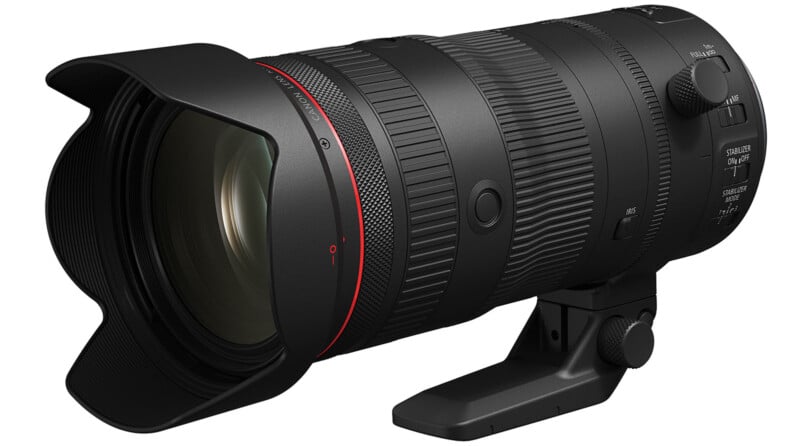![]()
Canon’s RF 24-105mm f/2.8 L IS USM Z is an extremely impressive lens. It’s also distinct, as it’s the only 24-105mm f/2.8 lens on the market. Per a recent interview in Japan, Canon executives suggest Canon isn’t done breaking the mold with its RF lenses.
In an interview with Japanese trail and railway website Tetsudo, spotted by Digicame-Info, members of Canon’s imaging business discussed the RF 24-105mm f/2.8 zoom lens, its development, and its target users.
“The RF 24-105mm f/2.8 L IS USM Z was developed with the aim of being a lens that can be used in a hybrid manner, for both still images and movies,” says Canon’s Kengo Iezuka, who was in charge of planning the new lens. Speaking about still photography in particular, Iezuka says that many professional photographers, like wedding and portrait shooters, carry two cameras to cover the standard 24-70mm focal length and a longer lens. The 24-105mm f/2.8 is designed to cover these needs in a single lens: wide-angle and mid-telephoto.
The lens has distinct controls for video applications, like a dedicated iris ring, and it works alongside an optional power zoom adapter. It is built with small teams in mind, ensuring they can handle a more diverse range of shooting situations with a single lens.
“After the announcement, we received particularly positive feedback from people in video production,” Iezuka says. “Video producers have praised it as a ‘dream lens.’”
Concerning the power zoom adapter, the PZ-E2, so far Canon has only said that it will work with the 24-105mm f/2.8 lens. However, Iezuka says, “At the moment, the power zoom adapter only supports the RF24-105mm f/2.8 L IS USM Z. We plan to add other compatible lenses in the future.” That’s fascinating information.
The interview also looks at how Canon managed to do something nobody else has done before: make a 24-105mm lens with a fixed f/2.8 maximum aperture. There are plenty of 24-105mm and 24-120mm f/4 lenses, and they’re great, but many pros demand a faster aperture.

“The RF mount has the advantage of having a large diameter and being able to place the lens closer to the image sensor (short back focus),” says Shunji Iwamoto from Canon’s optics division. “By taking full advantage of these features, the optical design of this product was able to allow for greater freedom in the optical design, enabling us to achieve attractive specifications at this size.”
Iwamoto says the mirrorless camera design also has benefits for the user experience. With DSLR cameras, photographers use an optical viewfinder, which can fall victim to issues with lens distortion. However, with a mirrorless camera system, the viewfinder image is electronic and derived from the image sensor. This image feed can be processed and corrected for distortion through software. Per Iwamoto, the digital distortion corrections that help make the lens pleasant to use also make the lens possible altogether.
“The RF mount enables high-speed, large-volume communication. I believe that the correction of distortion is something that was only possible with the RF lens, which is a mirrorless camera,” adds Canon electrical engineer, Minoru Uchiyama.
![]()
Canon also says it considered making the lens a 24-120mm f/2.8. While the team thinks it was possible, it would have necessitated a much larger and heavier lens design. The 24-105mm f/2.8 is already pretty big and heavy, so Canon believed the best overall balance was to stop at 105mm on the telephoto end.
Iezuka says something later in the interview that opens up the door for wishful thinking and speculation concerning other unique lenses.
“There are still many lenses that have not been released to the world,” Iezuka teases. “I can’t talk about the specifics, but there are lenses with basic specifications, and lenses with specifications that have never been seen before and that no one can imagine yet. We would like to develop these in a balanced way.”

That leaves a lot of space for Canon fans to dream up some wild lenses. Before the RF 24-105mm f/2.8 arrived, even that lens seemed like a pipe dream, so who knows what Canon is working on behind closed doors.
The complete interview on Tetsudo includes much more interesting information, including Canon’s views on stills versus video, how Canon arriving late to the mirrorless party has impacted the company’s plans, and some interesting tidbits about train photography with the RF 24-105mm f/2.8.
Image credits: Canon
